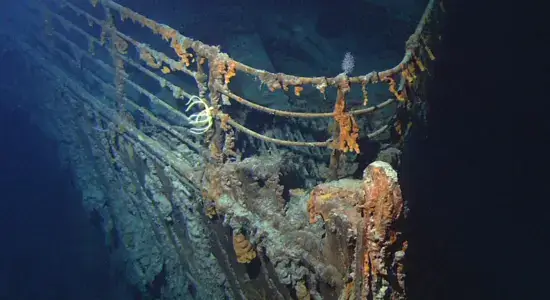
More than a century after the Titanic sank in April 1912, the mystery remains: why has no one ever found a single human body within the ship’s wreckage? Over 1,500 people perished in the tragedy, yet divers and researchers have never uncovered a single set of remains inside the vessel. The answer lies in a mix of biology, chemistry, and the harsh conditions of the deep sea.
The Science Behind the Disappearance
The Titanic rests at a depth of nearly 3,800 meters in the North Atlantic Ocean—a zone so deep that it falls below the calcium carbonate compensation depth (CCD). At this level, the water’s chemistry actively dissolves skeletal material. Even if bones had survived initial decomposition, they wouldn’t have lasted long against the corrosive seawater.
Further accelerating the process are marine scavengers—creatures like bone-eating worms, crabs, and deep-sea fish. These organisms consume soft tissue and can dismantle remains within weeks or months. Combined with near-freezing temperatures, immense pressure, and time, this environment ensures that no trace of human remains could endure.
What Happened to the Bodies?
In the days following the disaster, ships such as the CS Mackay-Bennett recovered more than 300 bodies from the ocean’s surface. Many were buried at sea or transported to Halifax, Nova Scotia. However, the majority of victims—nearly 1,200—were lost. Those who sank with the Titanic likely drifted apart from the wreck before settling into different parts of the ocean floor.
Despite some speculation over the years, including misinterpreted sonar images or curious findings from submersible missions, no evidence of human remains Titanic has ever surfaced—only personal items like shoes, coats, and luggage, which eerily suggest where people may have once been.
Deeper Doesn’t Mean Preserved
Some shipwrecks in shallower waters have preserved bones for decades or longer. But the Titanic’s extreme depth accelerates decay. The absence of light and oxygen, coupled with acidic seawater, destroys organic material fast. Dr. Robert Ballard, who discovered the Titanic wreck in 1985, stated publicly that no human remains were found during any official expedition.
Many people believe Jack and Rose were purely fictional characters created for the Titanic film. But is there any truth behind their story? Discover the real inspiration behind this iconic love tale in our article: The Truth Behind Jack and Rose – Were They Real People on the Titanic?
Did You Know?
Deep-sea biology tells us that large carcasses—like dead whales—can survive for years on the ocean floor, becoming ecosystems known as “whale falls.” However, even these massive bodies eventually vanish under the same forces that would have erased human remains Titanic.
If unraveling the scientific truth behind haunting maritime disasters fascinates you, stay curious with Fact Fun. We explore the forgotten depths of history with evidence, not just stories. Bookmark Fact Fun and never miss a dive into the deep.
ref : IFLScience , The Guardian






